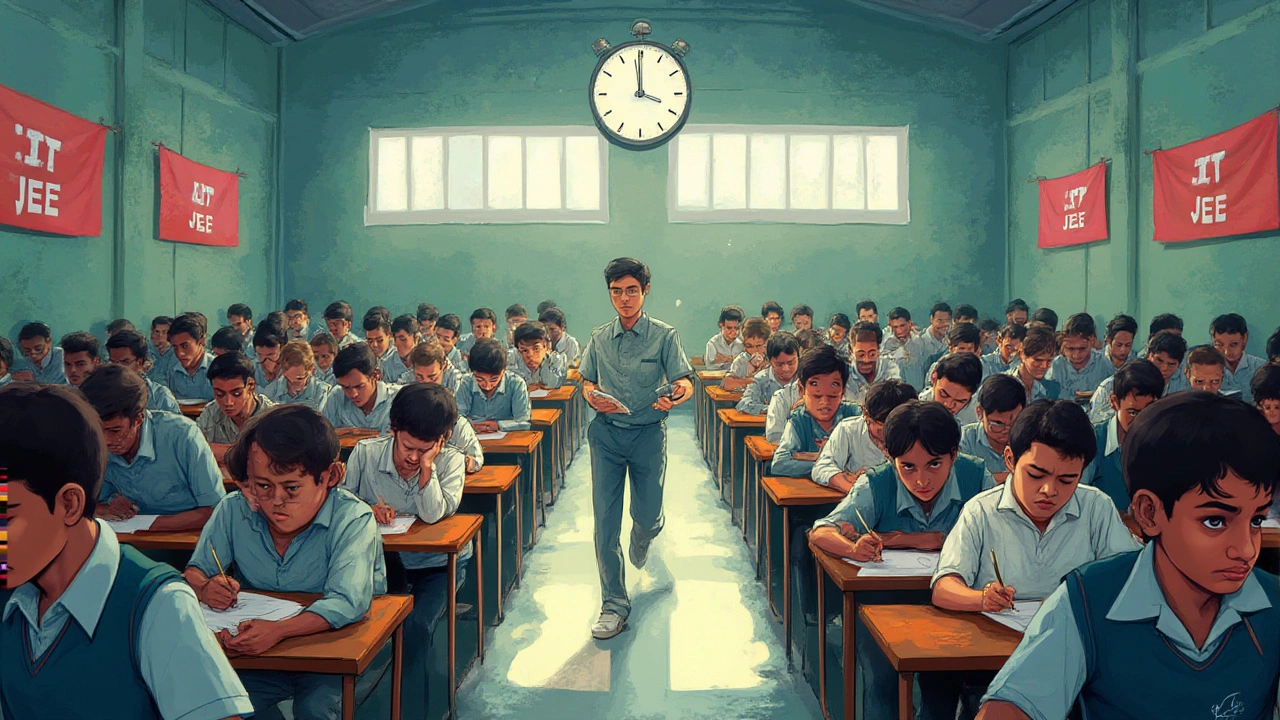Try telling a group of teenagers in India that you want to crack IIT and watch their faces. Suddenly, the air gets heavy, as if you’ve said you’re aiming to walk on Mars. Honestly, the race to get into IIT is less of a marathon and more of a high-wire act over a canyon. Maybe you’re curious if those stories about impossible odds are exaggerations. They aren’t. Getting into an Indian Institute of Technology is about as rare as finding a flawless diamond in a bag of marbles—statistically, it’s the dream of millions, but realized by a tiny sliver.
The Real Numbers: How Rare Is an IIT Seat?
Let’s start with some honest math. Around 1.4 million students registered for the IIT JEE Main 2025—that’s more than the entire population of some countries, all fighting for just over 17,000 available undergraduate seats across the 23 IITs. That leaves you with a ballpark acceptance rate below 1.3%. In fact, for the elite branches like Computer Science at IIT Bombay or IIT Delhi, the odds dip to roughly 0.2%. Here’s what that looks like in plain numbers:
| Year | Applicants (JEE Main) | Appeared for JEE Advanced | Qualified for IIT | Total Seats | Acceptance Rate (%) |
|---|---|---|---|---|---|
| 2022 | 1,475,000 | 160,000 | 40,000 | 16,598 | 1.12 |
| 2023 | 1,370,000 | 185,000 | 42,000 | 17,385 | 1.27 |
| 2024 | 1,450,000 | 175,000 | 45,000 | 17,740 | 1.22 |
| 2025 | 1,408,000 | 181,000* | 48,100* | 17,920 | 1.27 |
*Estimated data as of July 2025.
Now, just because the overall acceptance is low doesn’t mean everyone’s chances are exactly the same. Different reservation categories, state quotas (for NITs, not IITs), and the choice of branch make a huge difference. The stark reality? For general category students aiming for the top five IITs and the most popular streams, the odds are even lower. Every year, about 80% of advanced test-takers do not make it to any IIT at all. That’s how rare it is—rarer, in fact, than the Ivy League acceptance rates in the US.
Why the IITs Are So Hard to Get Into
The test itself is brutal—JEE Advanced is designed so that only those with both deep understanding and quick thinking float to the top. Picture a six-hour brain marathon spread over two papers, mixing up physics, chemistry, and maths into twisted puzzles most adults couldn’t solve on a good day. Out of those who qualify for the Main, just 11-13% are invited to even sit the Advanced. From there, barely a third qualify for a rank, and only about 40% of rank-holders get an actual seat. Sound exhausting? That’s just the exam side of it. Now, stack on the years of prep, coaching, and real-world pressure from family and society. No wonder IIT stories often come packed with tales of late-night study sessions, missed birthdays, or that one friend who’d bring textbook pages to a wedding.
There’s also the reputation. The IITs, since their founding in the 1950s–1960s, have become the dream not just for science nerds, but also for ambitious parents who see them as springboards to Silicon Valley, Wall Street, or an easy US visa. Add to that the job placement stats—some grads got offers of over ₹2 crore per year in 2025 from international firms. No surprise the fight is so fierce.
But is it just about brains? Nope. Success needs focus, a strategy, and a support system. Even top scorers share that sticking to a disciplined routine, regular self-tests, and managing stress beat cramming. And still, luck plays a role—one silly error on D-day and four years of prep can vaporize.

IIT Myths vs. Reality: What Stats Don’t Show
Let’s bust a few myths. First—kids who clear JEE aren’t superhuman. Most are regular students who found the right prep hacks for them. A 2023 survey from IIT Kanpur showed that nearly half the new BTech batch didn’t attend high-end coaching, relying instead on smaller or online setups. Some chose self-study, especially post-pandemic, using YouTube or platforms like Unacademy and Physics Wallah. What really worked? Smart time management, peer support, and old-fashioned grit.
Another myth—only first-timers crack JEE. In reality, a fair share of students make it in their second (or even third) attempt. Sure, it takes a toll, but persistence often trumps raw talent here. Also, not everyone who fails ends up anywhere bad. There are legions of ex-IIT aspirants doing brilliantly in NIITs, state engineering colleges, or even outside academic circles. The IIT badge is powerful, but it’s hardly the one-passport solution many expect. Plenty of Indian tech CEOs and unicorn founders didn’t graduate from IITs, proving that it’s not the only path to success in India or abroad.
One more surprise: the gender gap is real, but shrinking. In 2024, nearly 4,800 girls secured a seat at IITs, up from 2,900 in 2017. More targeted scholarships and extra seats for female candidates help, but many still struggle with society’s biases or lack of encouragement.
Tips for Beating the Odds and Finding Your Path
If you’re in this race, here’s what cracked students say works (no sales pitch, just real talk):
- Break the syllabus into small topics and tackle them in cycles. Don’t let missed chapters snowball.
- Focus on concept clarity, not just problem count. Practice is good, but rote memorization won’t cut it on JEE Advanced.
- Do timed mock exams every 10–15 days—and take them seriously. Analyze mistakes, tweak your plan.
- Don’t compare your routine to someone else’s. Find what hours work for you and stick ruthlessly to that slot.
- Manage stress. Regular sleep, a walk in your street, or a chat with friends can actually help you solve that stubborn integration question better.
- Use free or cheap resources—NTA’s JEE archive, previous year papers, and websites like Khan Academy or Vedantu can be more useful than throwaway notes from big-brand coaching.
- Keep backup plans ready. Look at state colleges, BITS, IIITs, and even international scholarships. Life doesn’t end at IIT.
Your mental health matters too. Don’t ignore signs of burnout—most IITians who make it talk openly about hitting walls and needing to step back sometimes. Stay connected with friends and family who support you, not just the ones who want results.
Beyond the numbers and headlines, remember this: cracking IIT is rare and tough, but real people do it every year. They aren’t outliers—they’re driven, resilient, and often willing to keep failing until something clicks. But you don’t need a fancy last name or superpowers. You need a plan, self-belief, and some well-timed luck. And if you don’t make it? That’s fine too—because India, and the world, needs all kinds of talent, not just IITians.
